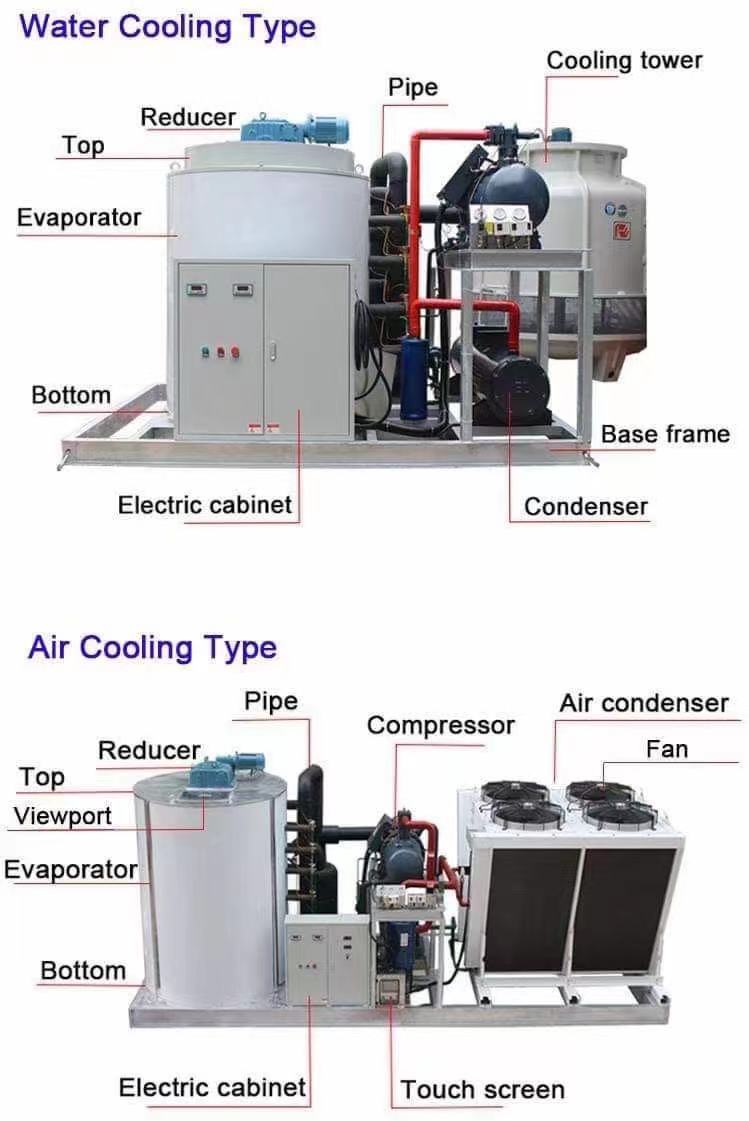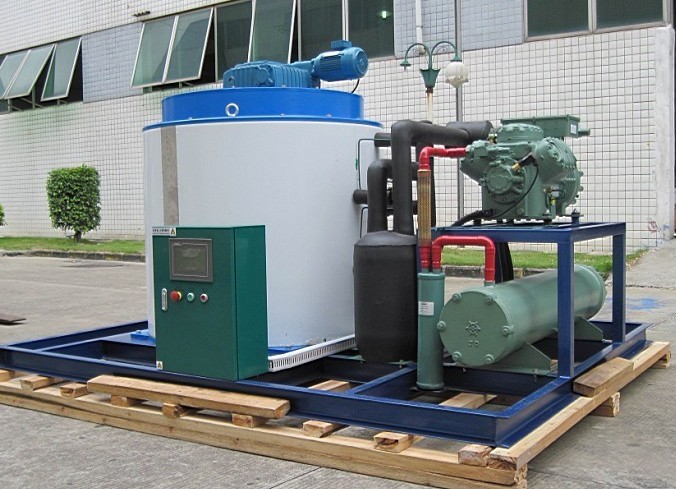Ice maker machine working principle
Ice maker
Through the make-up water valve, the water automatically enters a water storage tank, and then the water is pumped through the flow control valve to the diverter head, where the water is sprayed evenly on the surface of the ice maker and flows through the ice maker like a water curtain. The water is cooled to the freezing point, and the water that has not been evaporated and frozen will flow into the water storage tank through the porous tank and restart the cycle.
When the ice reaches the required thickness (the thickness can be arbitrarily selected by the operator/user), the hot gas discharged from the compressor is re-introduced back into the ice maker clip wall to replace the low-temperature liquid refrigerant. This forms a thin film of water between the ice and the wall of the evaporation tube, which will lubricate the ice as it falls freely into the groove below by gravity. The water produced during the ice harvest cycle will be returned to the water storage tank through the porous tank, which also prevents the wet ice from being discharged by the machine.
1. The chilled water in the water storage tank is continuously circulated by the water pump through the plate-type or compartmentalized evaporator;
2. After the compressor operates, it undergoes suction-compression-exhaust-condensation (liquefaction)-throttling-and then evaporates in the evaporator at a low temperature of -10 to -18 degrees to absorb heat and vaporize. Chilled water continuously condenses into ice on the cooler surface of the evaporator at a water temperature of 0 degrees. When the ice layer condenses to a certain thickness, after the evaporation temperature of the refrigerant reaches the set temperature of the temperature control, the defrosting solenoid valve is turned on, and the heat pump is often used to remove the ice, and then the next cycle is realized.













